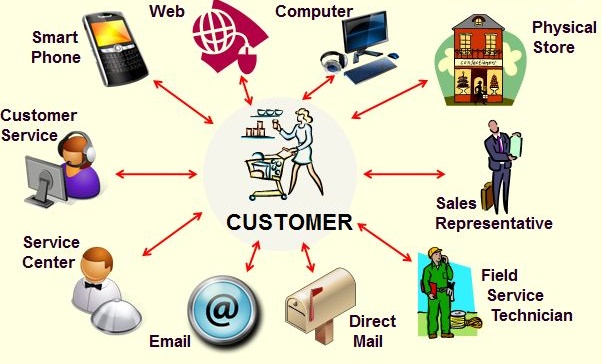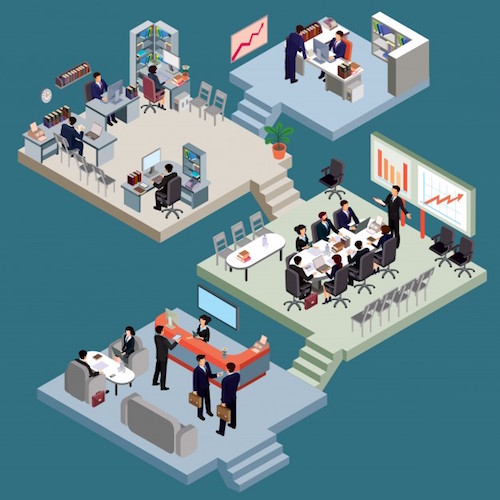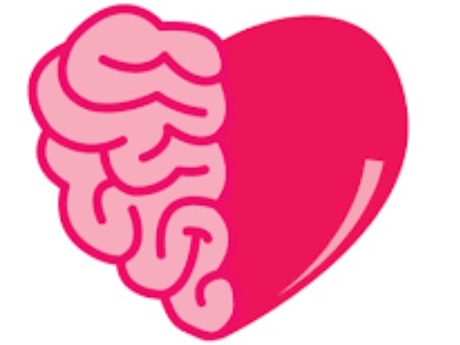DEMYSTIFYING CUSTOMER EXPERIENCE: A GUIDE FOR CONSULTANTS
By: James Grieve & Sean Shepherd
Fall 2017 Issue
What makes great customer experiences memorable? Many believe that it is the people delivering the service. Others feel it is a deep understanding of customer wants, needs, and expectations. And yet others value trust and consistency.
While these are valid thoughts, they do not capture all the aspects of a great customer experience.
Just as there are five senses in the human body, there are five dimensions of customer experience. All are equally important, interrelated, and operate in synchronicity to produce the maximum impact for the customer. Management consultants working in this space require an in-depth knowledge of the intricacies of each, in order to maximize the benefit of the client engagement. Let’s review each in detail:
Touchpoints
The most tangible and obvious dimension of customer experience is a ‘touchpoint’. A touchpoint is any direct interaction between your customers and your business. This includes such obvious things as:
- Websites;
- Ads (print, radio, social media, mobile, etc.);
- Emails (campaigns or regular);
- Kiosks/check-in counters;
- In-store salespeople;
- Customer service call centres.
But it also includes other, more subtle factors such as:
- Search engine profile and links results;
- Online resources (FAQ page, YouTube videos, etc.); and
- Onsite signage / directors
Regardless of their subtlety, touchpoints are often those instances where customers form a long-lasting impression of a business, either positively or negatively. Unfortunately, most businesses often overlook the more subtle touchpoints while categorizing the obvious ones by department. This results in touchpoints being designed and delivered entirely separate from one another: marketing touchpoints are distinct from sales touchpoints; sales touchpoints are distinct from customer service touchpoints; and so on. This in turn typically leads to a fractured and confusing journey for the customer as they jump from one touchpoint to another in a way that contradicts their expectation of a uniform and consistent experience.
From a customer’s perspective, touchpoints are not isolated ‘mini-experiences’. Instead, a business must think of them as part of a collective whole that must work together to communicate a brand message, address customers’ needs and concerns, and help differentiate the business from its competitors.
By taking the time and effort to look at touchpoints this way, a business can uncover weak links, build from strong points, and perhaps even identify opportunities to create new types of touchpoints that will all help to improve the customer experience. Of course, the obvious outcome of such an approach requires a shift in thinking internal to the business: looking beyond traditional hierarchies and departmental silos to design the overall journey, no easy feat by any means.
But attaining this level of co-operation will result in astonishing levels of customer loyalty, enthusiasm, and competitive superiority.
Pathways
To be effective, touchpoints must seamlessly transition customers from one touchpoint to the next. We call these transitions ‘pathways’ and they form the second dimension of Customer Experience. Pathways, like touchpoints, can take many forms. Some of the most obvious examples of pathways are:
- Instructions of what to do next;
- Directional signage;
- Website or app navigation;
- Digital shopping cart instructions (step 1, step 2, etc.); and
- Flow charts.
Pathways are often the second most overlooked dimension of Customer Experience. Businesses tend to focus their energy and resources exclusively on their touchpoints, but they rarely consider how to best transition their customers from one touchpoint to the next. Pathways are like the hand-off in a 4 x 100 metre relay race; they sustain momentum and keep the journey going smoothly. Executed properly, pathways connect one touchpoint to another effortlessly to contribute to a positive experience in the customer’s journey.
Conversely, poorly-transitioned pathways complicate the journey, turning the relay into a complicated, obstacle-filled steeplechase that decreases the likelihood of completing the sale, and can even result in disqualification and a lost customer. Well-designed pathways consider the expectations that the previous touchpoint(s) have created for the customer. Pathways must be careful not to contradict or undermine these expectations in any way, must be very clear and easy to navigate, and require little effort to follow.
If a business’s pathways fail in any of these areas – if they contradict customer expectations, if they are difficult to understand, or if they require a lot of time and effort to follow – the business loses customers, no matter how good the touchpoints are.
To design pathways that are consistent and seamless, stakeholders from all areas and all levels of a business must be included. Together, they must understand how touchpoints work together, ensure that the language and labelling of each touchpoint is consistent, and determine if directions are clear and easy to follow between touchpoints.
When effective pathways are designed, the result is increased sales, less complaints, reduced stress on employees, and more loyal customers. In sum, great rewards for paying attention to something most businesses overlook.
Delivery
Delivery revolves around cooperation between departments, suppliers, and distributors that enables an organization to execute memorable customer experiences. Delivery, like the previous two dimensions, can take a number of different forms, including:
- Organizational structure / hierarchy;
- Internal processes (eg: sales, operations, account management);
- Interdepartmental communications;
- Brand messaging; and
- Supply chain management.
Some less obvious examples of Delivery are:
- Improvement processes;
- Alignment of departments;
- Integration of technologies;
- Recruitment and training; and
- Internal review processes.
Delivery deals almost exclusively with the internal mechanisms of an organization, and is the most mature dimension in terms of established methods for improving performance. The Kaizen Method (also known as Lean), for example, can achieve dramatic results in this area when applied correctly. Based on the principles of consistent communication, rapid and iterative improvement, and tightly integrated cross-functional teams, this methodology can help organizations achieve the internal alignment necessary to succeed in Delivery.
However, there is one important caveat when applying Kaizen to an organization. Without a clear understanding of the customer and what they value from an organization, decisions made to increase internal efficiencies may actually have an adverse effect on the customer. When it comes to Customer Experience, what may be beneficial from an internal efficiency perspective may have to come second to what is important to the customer. This is why it is so crucial to devise a Customer Experience strategy that includes consideration of all five dimensions.
Ultimately, the most successful organizations transform traditional organizational silos into a unified, aligned team that unites across the entire organization toward the goal of delivering memorable customer experiences. In sports, the biggest games are won in practice. Similarly, the success of the Delivery of the Customer Experience is dependent on how well organizations prepare to delight their customers. The future is bright for organizations that adapt multi-dimensional strategies, empower employees, create extensive training programs, and deploy relevant incentive and recognition programs to enable their teams to meet and exceed customer expectations.
Ecosystem
Ecosystem is the values and structure of an organization that drives how it does things and why, but also includes the way the organization is perceived and experienced by its customers. Some of the clearest examples of Ecosystem are:
- Corporate culture;
- IT infrastructure;
- Supply chain;
- Corporate structure; and
- Strategic partners.
Some less obvious examples of Ecosystem include:
- Brand perception in the market;
- Internal alignment;
- Hiring practices, reward systems, and HR policies;
- What the employees value; and
- Definition of the customer across departments.
Every organization’s Ecosystem is unique, reflecting its character, culture, and values. Different people, interactions, rituals, and tones must be well understood and respected for customer experience excellence to thrive. Organizations should thoroughly figure out a Customer Experience Ecosystem at the outset of the business’ strategic planning process, integrate it throughout the customer experience strategy, and ensure that it is consistently applied to be most effective.
There are four requisites to a successful Ecosystem:
1. Understand the Company’s Ecosystem
Take inventory of the organization’s value across its entirety, internally and externally. What is the real nature of the organization? What do employees value? Is there a gap between what management believes and what employees perceive to be the culture? How is the business perceived by its customers?
2. Organize the Organization’s Ecosystem Around its Customers
Organizational hierarchy should be ordered with customers at the top, followed by employees, suppliers, distributors, partners, investors, then competitors. This hierarchy of needs should prevail through all activities so that everyone’s thinking and actions align towards the customer.
3. Include Customer Experience in Everything Everyone Does
Provide customer experience context for all the organization’s activities, roles, and decision-making of all kinds. By attaching customer stories and comments to everything in the organization, the Ecosystem will become intrinsically tied to customer experience.
4. Make Customer Experience Part of the Organization’s DNA
Tie Customer Experience directly to both advancement and hiring criteria. This will ensure a strong, customer-centric Ecosystem for decades to come. When Customer Experience is central to employees’ thinking and doing, the Ecosystem will more likely develop deep roots within a company.
Understanding, respecting, implementing, and maintaining an Ecosystem is a key success factor for organizations. As daunting as it may initially appear, it is certainly feasible, and will be exciting and fulfilling. The benefits are vast, and it will differentiate an organization from its competition, save money, ensure goodwill, and accelerate the positives of all customer experience management efforts.
Empathy
Empathy is the heart of customer experience. It is the ability to understand and relate to the feelings of others, and is the most fundamental dimension of every successful organization’s customer experience strategy. After all, customer experience is fundamentally a human experience. Importantly, Empathy in this context does not only apply to customers, but also to employees. Some of the most obvious examples of Empathy are:
- Active listening;
- Using language familiar to customers (not using acronyms or industry jargon);
- Being flexible with customers’ schedules;
- Identifying high-stress situations and managing customer expectations and emotions connected to them; and
- Mitigating the impact of high-stress situations with mental and physical support programs for employees.
Some less obvious examples of Empathy are:
- Involving stakeholders from all levels and all areas of the organization to participate in both strategic and tactical decisions;
- Anchoring processes to a consistent strategy;
- Implementing technologies using processes that reduce stress don’t compound it;
- Prioritizing long-term relationships over short term efficiencies; and
- Not sacrificing the important for the urgent.
Customer experience cannot always deliver solutions, but it can always deliver Empathy. When customers experience an organization, they want to be heard and feel like they are truly understood. Similarly, an organization must make its employees feel like they are heard and understood. On the most basic level, companies deliver Empathy by thoughtfully shaping the customer experience around managing the emotions connected to each step of the journey for both customers and employees.
Both groups should be treated like individuals, rather than sources of revenue, on every step of the journey. Empathy must be at the core of every organization’s Customer Experience strategy. Delivering Empathy improves the overall impression of a company, even if the customer recently had a negative experience.
Furthermore, Empathy makes good business sense because it is the ultimate customer retention strategy. When customers are valued and treated as much, they’re more likely to choose that business the next time around – even if they experience a negative interaction. Similarly, if employees feel valued and connected to the organization, they are less likely to leave and will produce more per capita than organizations with apathetic employees.
A customer or employee problem can’t always be solved, but they can always be made to feel important. And, some parts of an organization’s relationship with a customer may always involve some inescapable levels of stress and negativity. But, when it’s demonstrated that a company cares, its customers carry that positive feeling with them the next time they use a product or talk about the company to colleagues. Customers will provide repeat business, positive word-of-mouth, and referrals – and employees will provide loyalty, innovation, and productivity.
As best-selling author Daniel Pink notes, “Empathy is about standing in someone else’s shoes, feeling with his or her heart, seeing with his or her eyes. Not only is empathy hard to outsource and automate, but it makes the world a better place.”
In Closing
Customer Experience is an emerging strategic imperative for businesses that deserves a seat at the table along with the traditional functional disciplines such as human resources, marketing, finance, and operations. For consultants, Customer Experience is an important perspective to analyze when engaging clients because many business owners struggle to meet the changing needs and expectations of their customers. Typically, when management consultants engage with business owners, they tell us that they have a pretty good understanding of their customers and that their generally customers like them and they way they do business. However, there are still challenges that get in the way of consultants reaching their business goals and connecting with their customers.
In today’s economy, most business owners are busy, and spend most of their time working in, not on their businesses, and as a result, they have little or no time to dedicate to improving their customer experience. This myopic approach leads to costly mistakes because key resources such as time, people, and money are not directly allocated to their most important asset, their customers. By understanding the importance of the Five Dimensions of Customer Experience, consultants can support their clients by making strategic recommendations with an emphasis on aligning decision-making on what their client customers value, thereby creating new and retaining current customers and achieving sustainable customer-driven growth.
James Grieve is a Certified Management Consultant and partner in Nucleus Strategies, a Kelowna-based consulting firm that specializes in working with businesses in a variety of industries to design great service experiences that delight customers and improve business performance. For over 20 years James' consulting career has been well balanced among: strategic planning, marketing strategy, project management, change management, B2B and B2C sales, customer experience design, and business development, with emphasis on building, nurturing, and sustaining client relationships.
He can be reached at 778.214.6010, or james@nucleus-strategies.com.
Sean Shepherd is a Certified Usability Expert (CUA), and Information Architect (IA), and is completing his MSc in Information Design and Strategy through Northwestern University in Chicago where he is writing his thesis on Customer Experience Design.
Sean has spent the past 20 years working in design and communications. After beginning his career in publishing, public relations, and marketing, Sean moved into visual design, interaction design, and user experience design. Sean has worked for brands and agencies of all shapes and sizes in publishing, high tech, advertising, and the culture industries.






